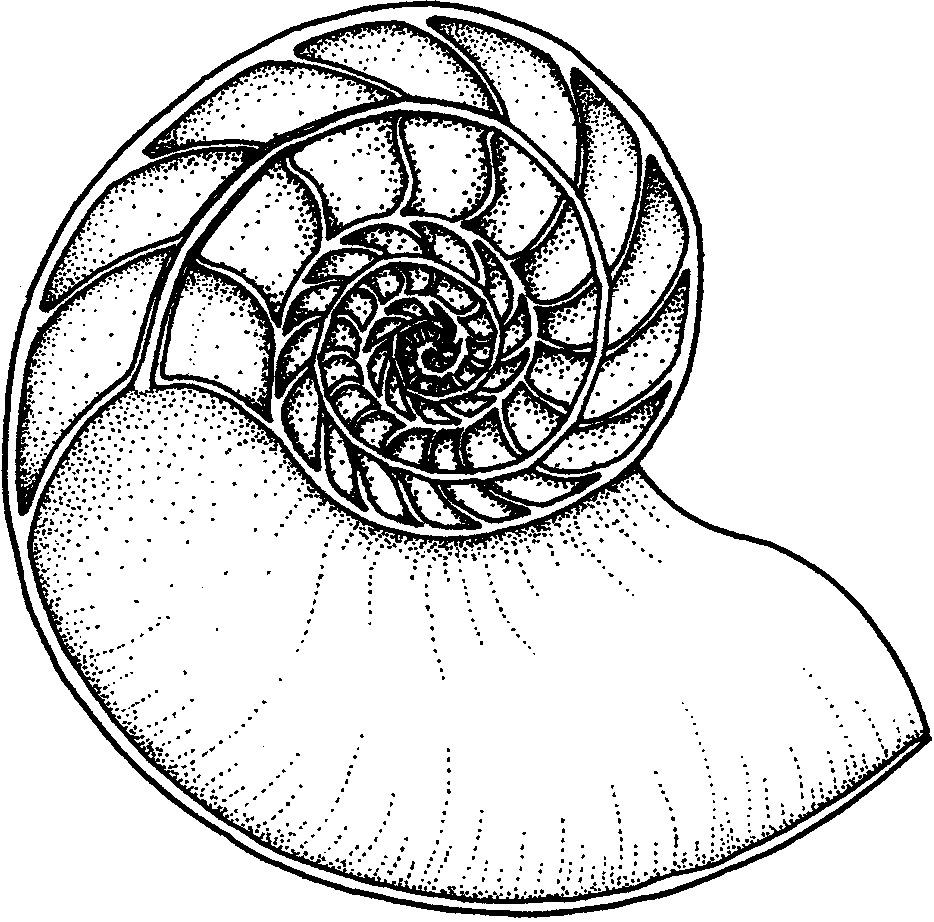
Proteoceratidae
Encyclopedia
Proteoceratidae is an extinct family
of actively mobile aquatic
carnivorous cephalopod
s belonging to the subclass
Nautiloid
ea endemic to what would be Asia
, Australia
, Europe
, South America
and North America
during the Ordovician
living from 490—445.6 Ma, existing for approximately .
 Proteoceratidae was named by Flower (1962). Its type is Proteoceras. It was assigned to Michelinoceratida by Flower (1962); to Pseudorthocerataceae
Proteoceratidae was named by Flower (1962). Its type is Proteoceras. It was assigned to Michelinoceratida by Flower (1962); to Pseudorthocerataceae
by Teichert et al. (1964), Sweet (1964) and Evans (1994); to Pseudorthocerida
by Kröger and Isakar (2006); and to Orthocerida
by Kröger et al. (2007).
Family (biology)
In biological classification, family is* a taxonomic rank. Other well-known ranks are life, domain, kingdom, phylum, class, order, genus, and species, with family fitting between order and genus. As for the other well-known ranks, there is the option of an immediately lower rank, indicated by the...
of actively mobile aquatic
Aquatic animal
An aquatic animal is an animal, either vertebrate or invertebrate, which lives in water for most or all of its life. It may breathe air or extract its oxygen from that dissolved in water through specialised organs called gills, or directly through its skin. Natural environments and the animals that...
carnivorous cephalopod
Cephalopod
A cephalopod is any member of the molluscan class Cephalopoda . These exclusively marine animals are characterized by bilateral body symmetry, a prominent head, and a set of arms or tentacles modified from the primitive molluscan foot...
s belonging to the subclass
Class (biology)
In biological classification, class is* a taxonomic rank. Other well-known ranks are life, domain, kingdom, phylum, order, family, genus, and species, with class fitting between phylum and order...
Nautiloid
Nautiloid
Nautiloids are a large and diverse group of marine cephalopods belonging to the subclass Nautiloidea that began in the Late Cambrian and are represented today by the living Nautilus. Nautiloids flourished during the early Paleozoic era, where they constituted the main predatory animals, and...
ea endemic to what would be Asia
Asia
Asia is the world's largest and most populous continent, located primarily in the eastern and northern hemispheres. It covers 8.7% of the Earth's total surface area and with approximately 3.879 billion people, it hosts 60% of the world's current human population...
, Australia
Australia
Australia , officially the Commonwealth of Australia, is a country in the Southern Hemisphere comprising the mainland of the Australian continent, the island of Tasmania, and numerous smaller islands in the Indian and Pacific Oceans. It is the world's sixth-largest country by total area...
, Europe
Europe
Europe is, by convention, one of the world's seven continents. Comprising the westernmost peninsula of Eurasia, Europe is generally 'divided' from Asia to its east by the watershed divides of the Ural and Caucasus Mountains, the Ural River, the Caspian and Black Seas, and the waterways connecting...
, South America
South America
South America is a continent situated in the Western Hemisphere, mostly in the Southern Hemisphere, with a relatively small portion in the Northern Hemisphere. The continent is also considered a subcontinent of the Americas. It is bordered on the west by the Pacific Ocean and on the north and east...
and North America
North America
North America is a continent wholly within the Northern Hemisphere and almost wholly within the Western Hemisphere. It is also considered a northern subcontinent of the Americas...
during the Ordovician
Ordovician
The Ordovician is a geologic period and system, the second of six of the Paleozoic Era, and covers the time between 488.3±1.7 to 443.7±1.5 million years ago . It follows the Cambrian Period and is followed by the Silurian Period...
living from 490—445.6 Ma, existing for approximately .
Taxonomy

Pseudorthocerataceae
Pseudorthocerataceae is an extinct genus of actively mobile carnivorous cephalapod, essentially a Nautiloid, that lived in what would be North America, Europe, Australia, and Asia during the Ordovician from 490—445.6 mya, existing for approximately ....
by Teichert et al. (1964), Sweet (1964) and Evans (1994); to Pseudorthocerida
Pseudorthocerida
Pseudorthocerida are generally straight longiconic nautiloids with a subcentral to marginal cyrtochoanitic siphuncle composed of variably expanded segments which may contain internal deposits that may develop into a continuous parietal lining.. Cameral deposits are common and concentrated ventrally...
by Kröger and Isakar (2006); and to Orthocerida
Orthocerida
Orthocerida is an order of extinct nautiloid cephalopods also known as the Michelinocerda that lived from the Early Ordovician possibly to the Late Triassic . A fossil found in the Caucasus suggests they may even have survived until the Early Cretaceous...
by Kröger et al. (2007).

